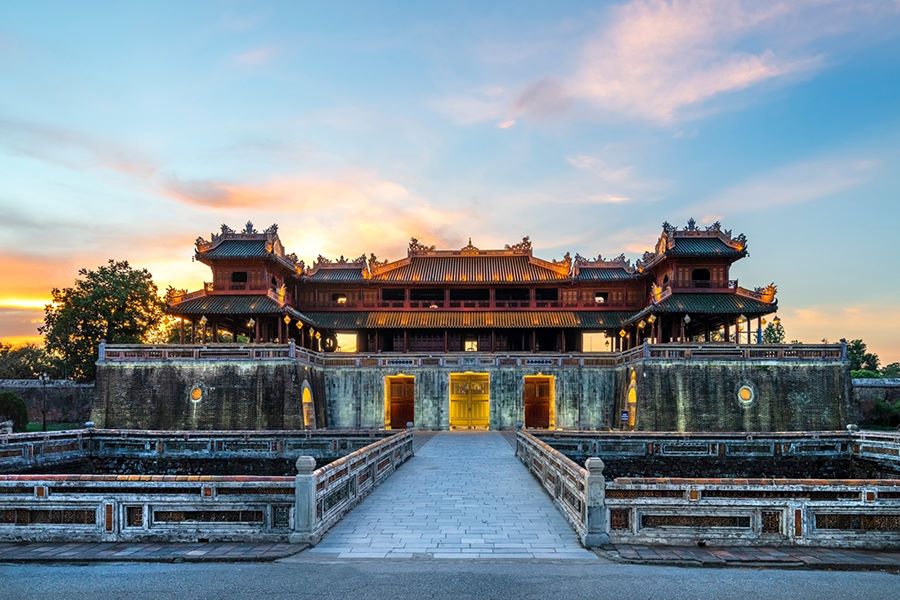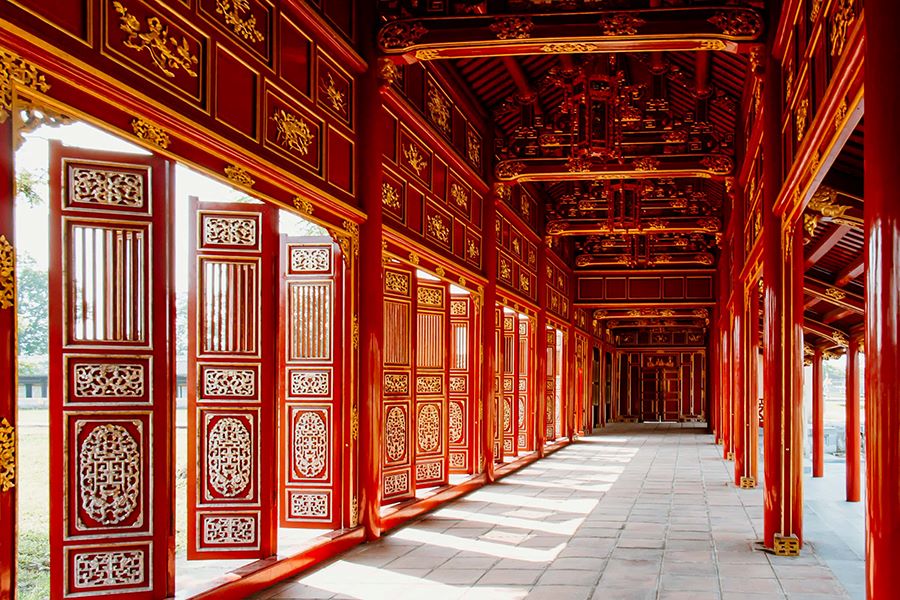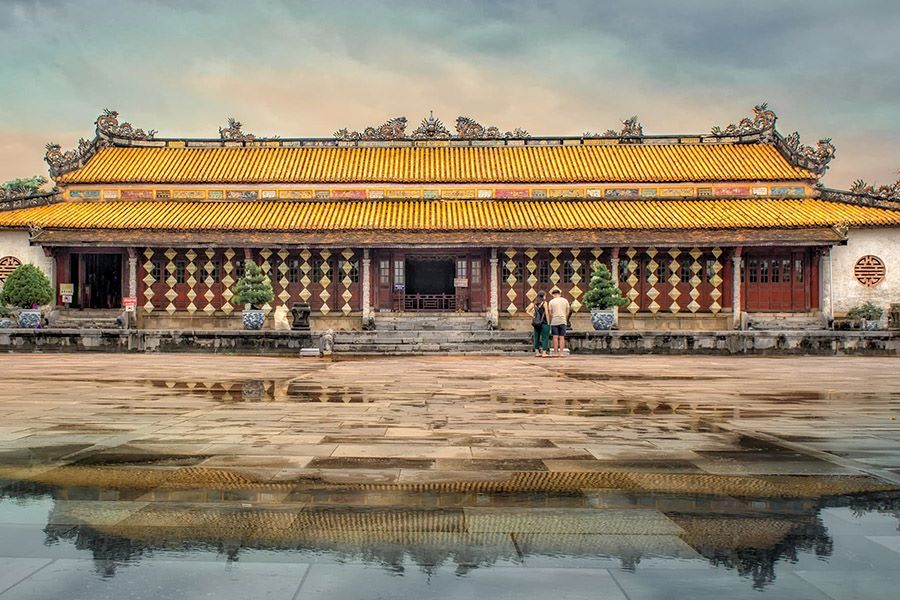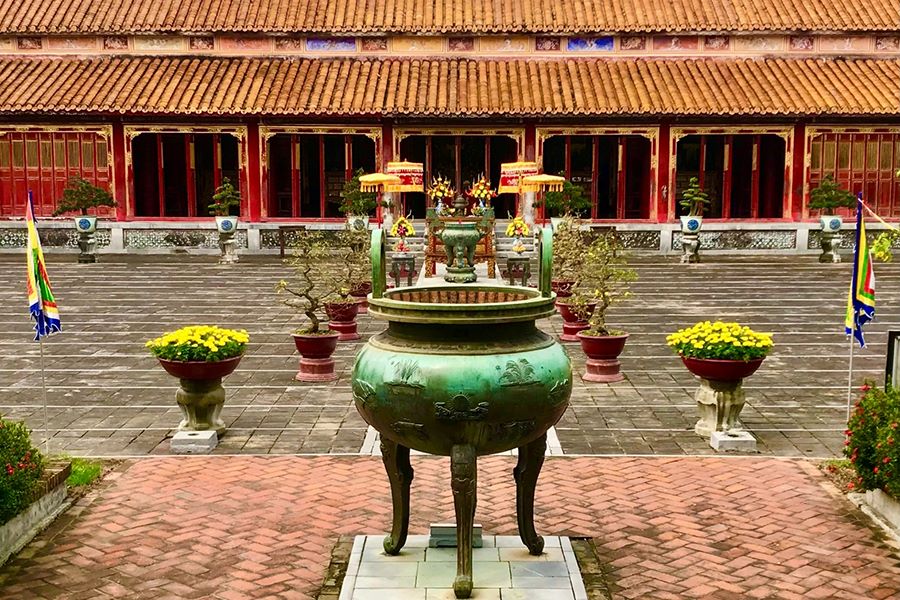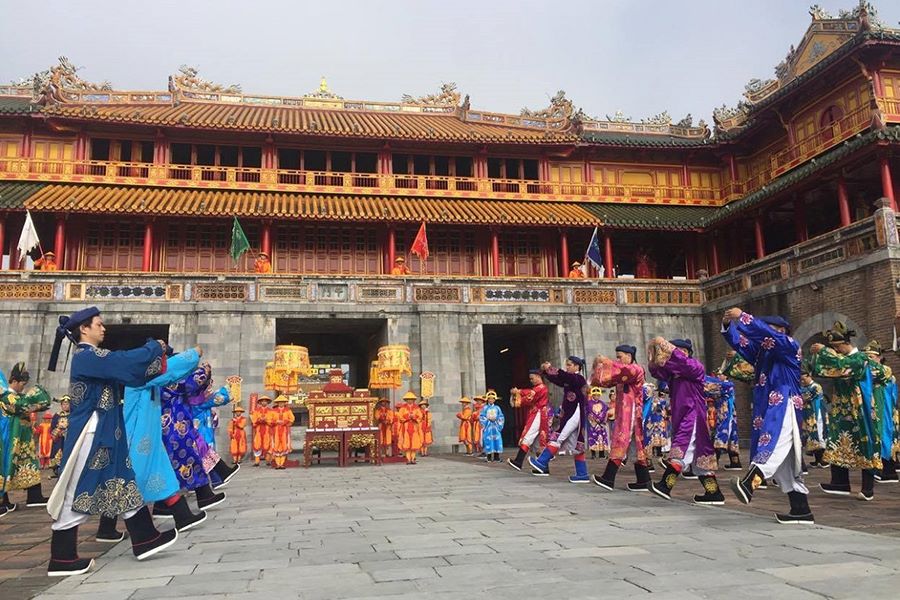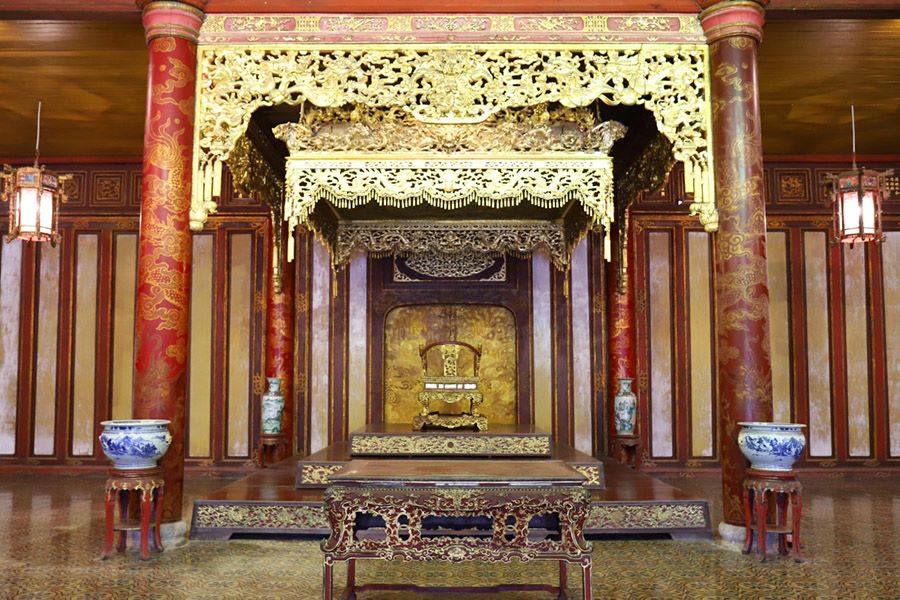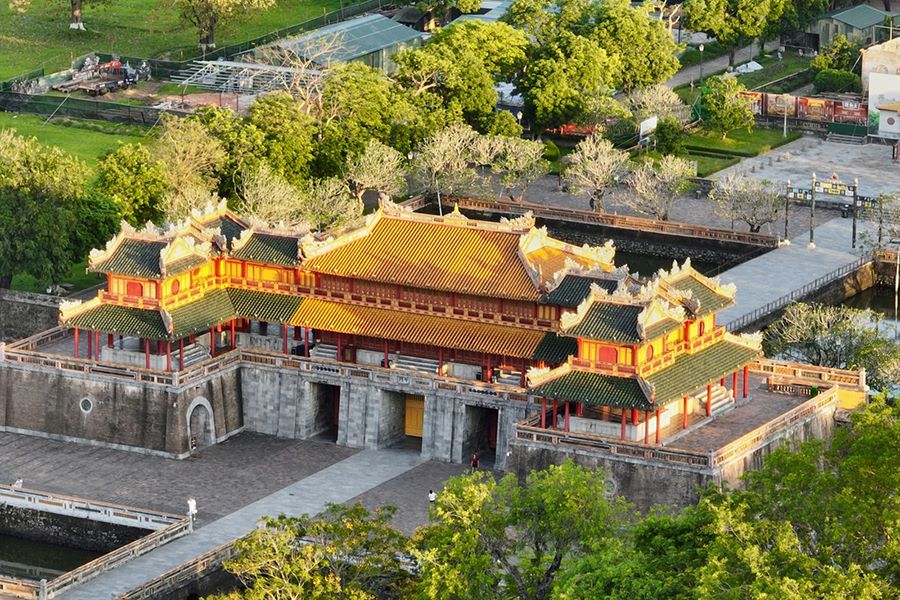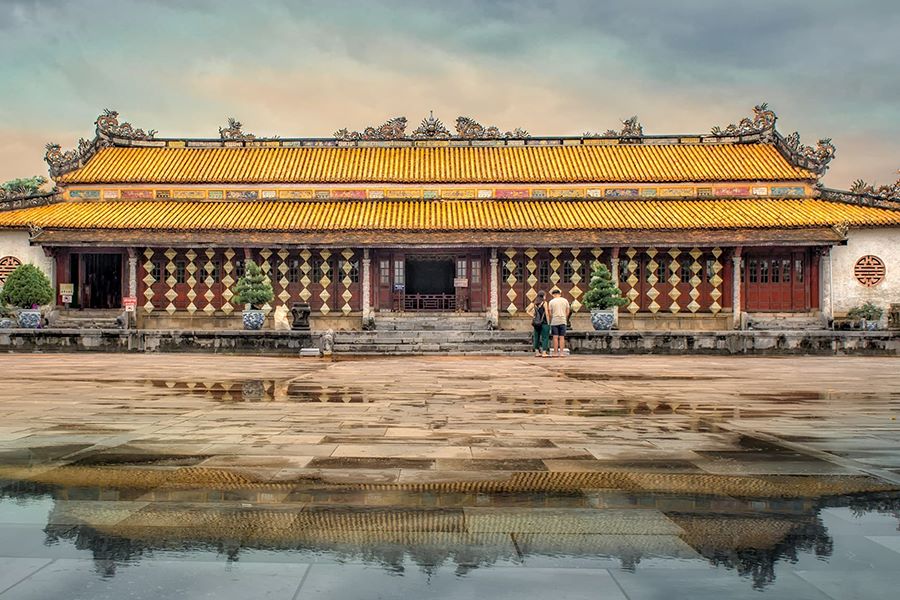Hue Imperial City, one of the most important structures of the Nguyen Dynasty, holds memories of a powerful feudal era in Vietnam. Visitors to Hue must explore this site to admire the beauty of the timeless architectural structures of the ancient imperial capital. Hue Imperial City is a renowned and captivating tourist destination, offering visitors the chance to appreciate both the stunning historical landscape and the rich architectural legacy of a bygone imperial era. For valuable insights and tips on visiting this awe-inspiring site in Hue, read on!
Contents
- 1 About Hue Citadel City Vietnam: Location, opening hours
- 2 Things to know about the history of Hue Citadel City
- 3 The architecture of Hue Citadel City: How many gates does it have?
- 4 What are the most impressive works in Hue Citadel City?
- 5 What are the prominent features of Hue Imperial City?
- 5.1 It is considered the most intact royal relic in Vietnam
- 5.2 It has special military architecture
- 5.3 It has ancient royal tombs of the Nguyen Dynasty’s emperors
- 5.4 It keeps a large number of precious royal treasures
- 5.5 It serves as the venue for many important festivals
- 5.6 It preserves Hue Royal Court Music
- 6 What to wear on your Hue Imperial City walking tour?
About Hue Citadel City Vietnam: Location, opening hours
Hue Imperial City is situated on the north bank of the Perfume River, bordered by Tran Hung Dao and Le Duan Streets to the south, Tang Bat Ho and Dao Duy Anh Streets to the north, Phan Dang Luu and Huynh Thuc Khang Streets to the east, and Le Duan street to the west.
Hue Imperial City opening hours vary by season:
- In summer: 6:30 AM – 5:30 PM
- In winter: 7:00 AM – 5:00 PM
Things to know about the history of Hue Citadel City
Imperial City Hue Vietnam is a grand citadel built during the reign of Emperor Gia Long in 1805. The royal court had to mobilize around 30,000 people to work on the river embankments and canals. By 1818, the number of people mobilized had increased to 80,000, focusing on brick cladding on the East, West, South, and North sides.
In 1831-1832, Emperor Minh Mang ordered the construction of additional defensive walls with cannons on the outer layer of the citadel, completing the structure of Hue Imperial City. The walls were used to defend the citadel and repel any potential invader.
Hue Imperial Citadel was not only a military stronghold but also a cultural and political center of Vietnam. The city served as the capital of Vietnam until 1945 when the country was divided into North and South Vietnam.
The architecture of Hue Citadel City: How many gates does it have?
The Hue Imperial Citadel boasts nearly square-shaped grounds with a concave front resembling a bow, gracefully following the gentle curve of Perfume River. Spanning over 10 kilometers in circumference, the citadel was a fusion of French fortress structure and Eastern architectural features.
Built to blend with the surrounding terrain, Hue Imperial City is a one-of-a-kind military architectural marvel, with unique features that set it apart from older imperial citadels. The Imperial City has a total of 13 main gates that lead to the outside, including two gates that are accessible through the waterways.
Encompassing more than 500 hectares, visitors to the Imperial City of Hue should have a thorough grasp of the directions leading to the various locations within its premises, to avoid getting lost. For easier navigation, a map of the Imperial City is provided below:
What are the most impressive works in Hue Citadel City?
Ngo Mon Gate
Ngo Mon Gate, situated in the south of the Imperial City of Hue, serves as the grand entrance and an intricate architectural complex. When seen from a distance, it presents itself as a splendid and grand castle with cascading steps constructed from long slabs of stone, leading up to Ngu Phung Pavilion.
Imperial Citadel
The Hue Imperial Citadel, or Hoang Thanh served as the residence of the emperors and the royal family, and the administrative center of the royal court. It is also a significant site of worship for ancestors and the late emperors of the Nguyen Dynasty.
Construction of Hoang Thanh began in 1804 under the reign of Emperor Gia Long and was completed in 1833 under the reign of Emperor Minh Mang. The citadel has four gates, with Ngo Mon as the grand entrance. Inside the citadel, there are many impressive structures, including Thai Hoa Palace, Dien Tho Residence, Hien Lam Pavilion, and more.
Forbidden Purple City
The Forbidden Purple City is located at the heart of Hue Imperial City. It was constructed in 1803 and received its name in 1821 during the reign of Emperor Minh Mang. It is designed in a rectangular shape, with Dai Cung Mon as its front gate.
The Forbidden Purple City includes numerous architectural structures within its innermost citadel, Tu Cam Thanh. Some of the key buildings and their functions are:
- Can Thanh Palace served as the residence of the emperor
- Khon Thai Palace served as the residence of the queen
- Duyet Thi Duong Royal Theatre was the venue for court dramas performed for the emperor, princes, high-ranking officials, and ambassadors
- Thuong Thien Imperial Kitchen was responsible for preparing meals for the emperor and royal family
- Duong Tam Palace was the emperor’s retreat where he could rest and indulge in leisure activities
- Thai Binh Pavilion was the reading area of the emperor
- Minh Quang Palace was the residence of the princes
- Trinh Minh Palace served as the residence of the concubines
What are the prominent features of Hue Imperial City?
It is considered the most intact royal relic in Vietnam
Despite more than two centuries of existence, Hue Imperial Palace Vietnam has managed to withstand the erosion of time and the destruction of war, preserving its grandeur and magnificence. Its palaces, fortresses, and tombs are all mostly intact. A visit to Hue Imperial City is a must for any traveler seeking to delve into Vietnam’s rich cultural heritage.
It has special military architecture
Hue Imperial City is a rare monument with a military architectural style that combines Western and Eastern features. On one hand, it incorporated the defensive structure of French fortresses. On the other hand, it carried the principles of yin-yang and the Five Elements.
It has ancient royal tombs of the Nguyen Dynasty’s emperors
The tombs of the Nguyen Dynasty’s emperors are masterful displays of feng shui principles, with careful consideration given to the placement of surrounding rivers, mountains, lakes, and ponds.
The tombs are typically divided into two distinct parts: the tomb area, where the remains of the emperor are laid to rest, and the temple area, which features a stunning array of pavilions, halls, and palaces.
Even during their life, the emperors would often retreat to this serene sanctuary to relax and indulge in the tranquil beauty of the surroundings. Each tomb and temple showcases a unique artistic style, making them a truly remarkable feat of architecture.
It keeps a large number of precious royal treasures
Hue Royal Antiquities Museum, founded in 1923 in the Imperial City, houses an impressive collection of historical artifacts made of pottery, porcelain, bronze, stone, and horn. These treasures not only display the artistic styles of the feudal period but also bear the marks of time, allowing visitors to gain a deeper understanding of the past.
It serves as the venue for many important festivals
Hue Imperial City has been the venue for many significant national events organized by the authority. Every festival had its unique regulations that the people and royal family in the past had to follow. Nowadays, the festivals recreate imperial court ceremonies, providing visitors with a glimpse into the traditions of the past.
It preserves Hue Royal Court Music
Hue royal court music has been acknowledged by UNESCO as an intangible cultural heritage, highlighting the cultural magnificence of Hue. This music was exclusively played during the coronation ceremonies, funerals, or significant festivals of the emperors. Hue royal court music is also the only traditional court music that is still being preserved in Hue.
Duyet Thi Duong Royal Theater, located within Hue Imperial City, offers tourists the chance to immerse themselves in the enchanting melodies of Hue royal court music. The historical royal theater has been meticulously restored and now features a range of performances, including court dances, classical drama excerpts, and Hue royal court music.
What to wear on your Hue Imperial City walking tour?
To fully enjoy your tour, it is important to follow the Imperial City Hue dress code. As a cultural heritage site of great historical significance, you should dress politely and avoid revealing clothes.
In addition, the Hue Imperial City Vietnam walking tour requires a fair amount of walking. Therefore, it is advisable to wear comfortable clothes and shoes that allow free movement and mobility.
Hue Imperial City is a must-visit destination for anyone interested in Vietnamese history and culture. With this ultimate guide, you will have all the information you need to fully appreciate the wonders of the Imperial City. Make sure to come and contemplate this historical relic of Vietnam!

